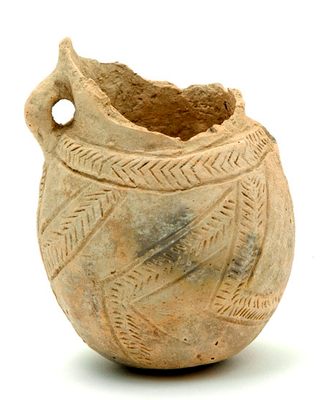About
Uncovered during the 1930's, the Sha'ar HaGolan site produced evidence of one of Israel's earliest civilized cultures who may have built the earliest roads known to man and were the first peoples in Israel to develop pottery.
Dating as far back as 6400 BCE, the Yarmukian culture may have been one of the first technologically progressive communities in the region of Israel. While evidence of the culture had been found at other sites, the Sha'ar HaGolan site provided enough evidence as to differentiate the Yarmukian people as a distinct group. In fact the Sha'ar HaGolan site proved to be one of the largest and most significant sources of neolithic art and artifacts in all of Israel.
Around 300 stone and clay figures were found at the site, which also included the remains of a number of buildings which also featured architectural innovations that were not thought to have existed at the time of Sha'ar HaGolan's height. Many of the figurines seem to be abstract, yet still markedly human, images of what may have been prehistoric gods and goddesses. Aside from the sculptural pieces, a number of pottery fragments were found which were clearly made for domestic uses, marking the first such find in the region. Maybe most remarkably, the foundations of the buildings which were uncovered are clearly laid out in a series of streets which may be the earliest example of such planning. Taken all together, Sha'ar HaGolan may mark the cultural shift away from nomadic society.
Today Sha'ar HaGolan is home to a kibbutz which was established in 1937. There is also a museum which displays many of the clay figures among other artifacts.
Related Tags
Community Contributors
Added By
Published
June 16, 2014






















